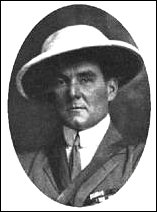By one estimate, 700 new products are introduced every day. Last year, 26,893 new food and household products materialized on store shelves around the world, including 115 deodorants, 187 breakfast cereals and 303 women's fragrances. In all, 2 million brands vie for attention.
To find profit in so many similar items, marketers attempt to brand a product on a buyer's mind. Such efforts put the average American adult in the crosshairs of as many as 3,000 advertising messages a day - five times more than two decades ago.
Children are exposed to 40,000 commercials every year. By the age of 18 months, they can recognize logos. By 10, they have memorized 300 to 400 brands, according to Boston College sociologist Juliet B. Schor. The average adult can recognize thousands.
"We are embedded in an enormous sea of cultural messages, the neural influences of which we poorly understand," said neuroscientist Read Montague, director of the Human Neuroimaging Laboratory at Baylor College of Medicine in Houston. "We don't understand the way in which messages can gain control over our behavior."
Messages, of course, are culturally constituted symbols that can be interpreted differently. Greeting someone with an extended toungue and feet stamping might be offensive to many, but constitutes "good manners" to the Maori and others. These are physical behaviors which get intepreted differently by cultures, gender, age groups, and so on. I can understand why a biologist would be keenly interested in how the brain reacts to stimuli (i.e., marketing messages), or could even change brain functions as a result, but lacking a larger social and cultural context in which to situate these findings places this research in the old crutch of biological reductionism, which itself is under attack from within the field.
But apart from that, how many people are we extrapolating from? Representative samples are the keystone to understanding social science, given the inherent problems in sampling (think of the exit poll debacle last November) and need to adequately capture variance in a small subset of a much larger social entity. "Variance is inversely proportional to sample size," goes the old statistical dictum, meaning that if you mixed an equal amount of black and white marbles together, then scooped up a sample with both hands, you will get nearer to a 50/50 count than with a small handfull (more likely all black or all white). But if you are a reductionist, there is little need for such research design protocols. So, what size are we talking about here?
After analyzing test data from 21 men and women, Quartz and Asp discovered that consumer products triggered distinctive brain patterns that allowed them to classify people in broad psychological categories.
At one extreme were people whose brains responded intensely to "cool" products and celebrities with bursts of activity in Brodmann's area 10 - but reacted not at all to the "uncool" displays.
The scientists dubbed these people "cool fools," likely to be impulsive or compulsive shoppers.
At the other extreme were people whose brains reacted only to the unstylish items, a pattern that fits well with people who tend to be anxious, apprehensive or neurotic, Quartz said.
The reaction in both sets of brains was intense. The brains reflexively sought to fulfill desires or avoid humiliation.
Twenty-one. Call me cynical, call me an angry fellow, but I am more than a bit skeptical that these sample sizes will capture the inherent variation that we see in most biological and social structures. And, like many other university-based experiments, will future researchers control for variables such as gender, self-reported race, educational levels, levels of sociability, etc, or will the "representative sample" constitute freshman and sophomore students, like many behavioral economic experiments? Finding two "broad psychological categories" with n=21 should not really constitute an meaningfully innovative discovery, given the following:

The answer to almost everything.


No comments:
Post a Comment